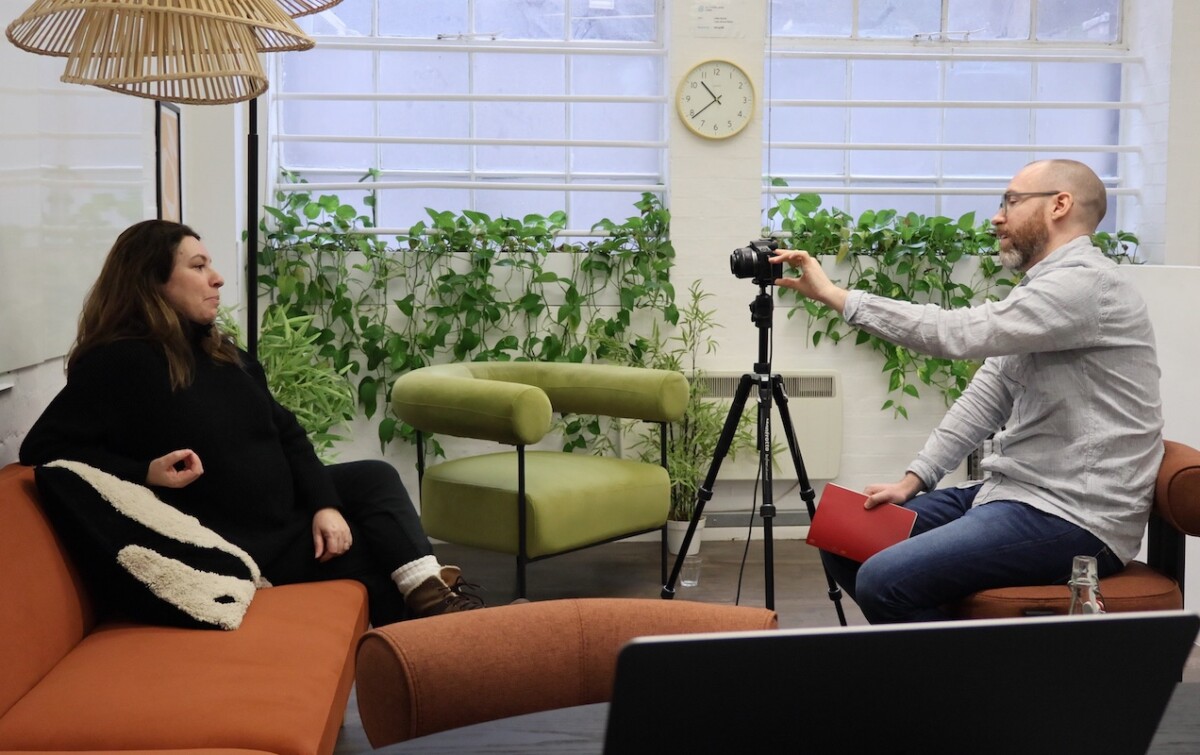Understanding the needs, behaviors, and preferences of customers is a crucial step in designing exceptional user experiences. At Sutherland Labs, we employ immersive tools to deeply understand users’ lives. These tools enrich our analysis and design recommendations with nuanced insights about the user’s world, values, and priorities. This blog posts discusses the advantages of visual ethnography and research films in enhancing customer experiences.

Understanding Research Films
A research film is an approach that utilizes visual media, such as photography, videography and sound, to document, analyze and understand people within their natural environment. Stemming from anthropological roots, visual research offers a holistic understanding of human behavior by capturing both verbal and non-verbal cues, environmental contexts, and cultural nuances. By immersing researchers in the everyday lives of participants, visual research goes beyond surface-level observations, uncovering deep-seated insights that inform the design process.
Richer Insights
Visual ethnography enables researchers to capture authentic moments and emotions, providing a nuanced understanding of user experiences that traditional methods might not reveal. By observing users in their natural habitat, researchers gain insights into unarticulated needs and pain points, allowing for more empathetic and user-centered designs.
- For example: We used visual ethnography in elderly people’s homes to observe and understand their attitudes towards managing their finances, revealing some surprising themes that challenge the cultural biases towards elderly customers.
Contextual Understanding
Context plays a significant role in shaping user behavior and preferences. Visual ethnography allows researchers to explore environments in which interactions occur and identify how external factors influence user decisions. By understanding the context surrounding user experiences, designers can create solutions that seamlessly integrate into users’ lives.
- For example: By observing and filming a family as they hired a car for a family road trip we revealed valuable insights pinpointing areas where the company could improve child safety.
Enhanced Empathy
Immersing into the users’ world fosters empathy among designers and stakeholders, leading to more inclusive and accessible products. Visual research engages with participants’ lived experiences, empathizing with their struggles, joys, and aspirations. This empathetic understanding drives the creation of designs that resonate deeply with users, ultimately enhancing customer satisfaction and loyalty.
- For example: We followed Chitra to understand her behavior as she navigated the healthcare system in India, and opened up a number of opportunities for healthcare providers to create better, patient-centered services.
Stakeholder Engagement
Images and videos have the power to convey narratives that resonate with audiences on a visceral level. Using engaging content, researchers can communicate insights in a compelling manner to internal stakeholders – from Product managers to CEO’s. This can significantly impact decision making and stakeholder buy-in in the development of a product or service.
- For example: We used wearable cameras to capture how kids interact with an AI assistant. Adult stakeholders felt again what it’s like to be a preschooler in a world built for adults and were quickly convinced of where and why to take action to design a product that works for real kids.
Putting Visual Ethnography into Practice
James Heaney, Principal Researcher in the Labs, shares his experience of using visual ethnography and the benefit for clients.
Visual ethnography offers a holistic approach to CX research, allowing researchers to delve deep into the lives of users and uncover rich insights. Embracing visual media as a tool for exploration and storytelling results in more informed problem solving and design decisions, and ultimately products that resonate with users on a profound level.
Incorporating visual ethnography into the research process is essential for staying attuned to the ever-changing needs and expectations of customers.
